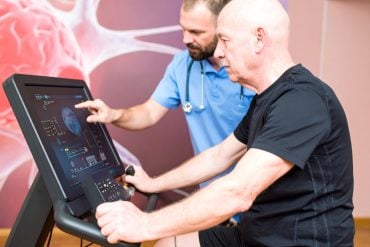Summary: Researchers have developed a genetic “barcoding” method to trace how stem cells in embryos become neurons and inner ear cells. By labeling early stem cells in mice, the team followed their development and mapped the formation of the inner ear.
They found that hearing-critical cells arise from two main types of stem cells, offering clues for future hearing loss therapies. This approach provides a detailed “family tree” of nervous system development and could eventually reduce the need for animal testing.
Key Facts:
- Genetic Barcoding: A virus-based barcode allowed researchers to trace stem cell development into neurons and inner ear cells.
- Hearing Insights: Two main stem cell types give rise to critical inner ear structures involved in hearing.
- Future Applications: The method could aid treatments for hearing loss and help study other parts of the nervous system.
Source: Karolinska Institute
Researchers at Karolinska Institutet have developed a method that shows how the nervous system and sensory organs are formed in an embryo.
By labelling stem cells with a genetic ‘barcode’, they have been able to follow the cells’ developmental journey and discover how the inner ear is formed in mice.
The discovery, published in Science, could provide important insights for future treatment of hearing loss.

“Our study shows how different cell types arise from stem cells in the embryo and how they are organised to create important structures in the brain,” explains Emma Andersson, docent at the Department of Cell and Molecular Biology, Karolinska Institutet.
“You could say that we have created a family tree for the cells of the nervous system and the inner ear.”
Replacing damaged cells
The researchers used a technique where they injected a virus into mouse stem cells at an early stage of development. The virus contained a genetic ‘barcode’ that was integrated into the DNA of the stem cells and then inherited as the cells divided.
By following this code, the researchers could track how the cells developed into different types of neurons and cells in the inner ear.
The results showed that cells in the inner ear, which are crucial for hearing, develop from two main types of stem cells. This knowledge could lead to new treatments for hearing loss.
“Tracing the origin and development of cells gives us a unique opportunity to understand the basic mechanisms behind hearing loss,” says Emma Andersson. “It can help us find new ways to repair or replace damaged cells in the inner ear.”
Exploring the nervous system
The team now plans to use the method to study other parts of the nervous system, but also how the rest of the body develops. They hope their work will lead to new insights and treatments for various genetic and developmental diseases.
“We are only at the beginning of understanding the complex processes behind nervous system development,” says Emma Andersson.
“Our method opens up many exciting opportunities to explore how the nervous system and the rest of the body are formed during embryonic development. In addition, the technique can reduce the number of mice used in research.”
She led the study with Jingyan He, a postdoctoral fellow, and Sandra de Haan, a former PhD student in Emma Andersson’s research group.
Funding: The research was funded by Karolinska Institutet, the European Union, the Erling-Persson Foundation, the Swedish Research Council, the Knut and Alice Wallenberg Foundation, the Hearing Research Fund, Horizon Europe and Wallenberg Bioinformatics Support. Co-author Jonas Frisén is a consultant for 10x Genomics.
No other conflicts of interest are declared.
About this genetics and neurodevelopment research news
Author: Emma Andersson
Source: Karolinska Institute
Contact: Emma Andersson – Karolinska Institute
Image: The image is credited to Sandra de Haan
Original Research: Closed access.
“Ectoderm barcoding reveals neural and cochlear compartmentalization” by Emma Andersson et al. Science
Abstract
Ectoderm barcoding reveals neural and cochlear compartmentalization
Placodes and the neural crest are defining features of vertebrates. In this study, we investigate their lineages in mice using in utero approaches.
We demonstrated that nanoinjection at embryonic day 7.5 targeted the ectoderm, including the future nervous system, placodes, and neural crest, allowing highly efficient manipulation of the future nervous system and inner ear.
By using heritable DNA barcodes and high-throughput next-generation single-cell lineage tracing, we elucidated convergent differentiation pathways and identified distinct nervous system–, neural crest–, and otic placode–derived lineages.
Clonal analyses identified early neural and cochlear compartmentalization, linking differentiated cell types to their progenitors or cellular siblings.
This provides foundational insights for neuroscience and developmental biology.






